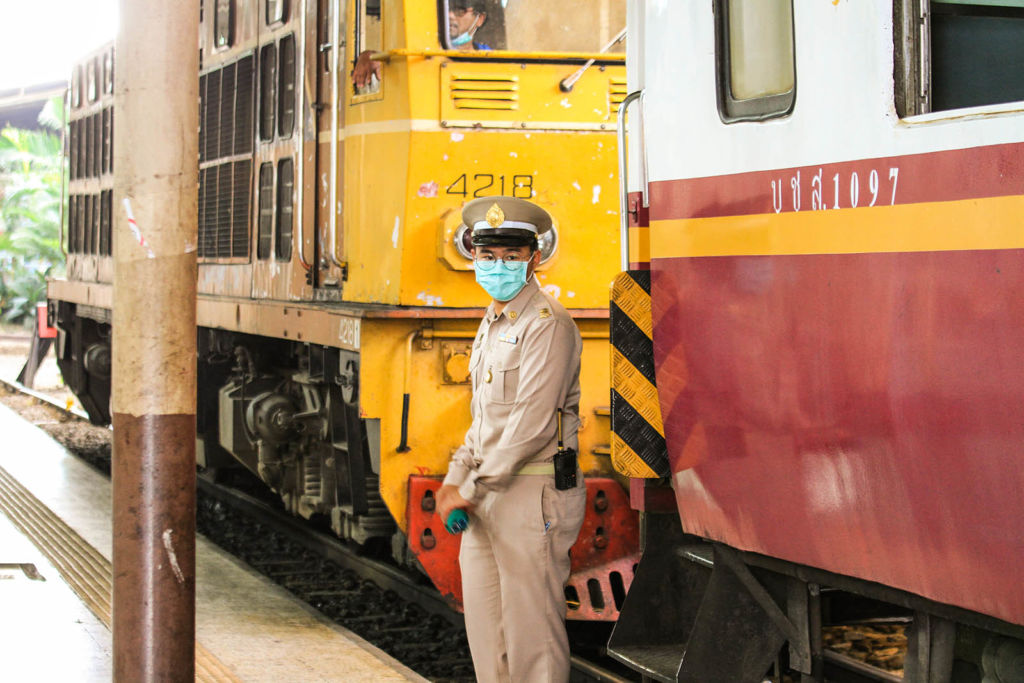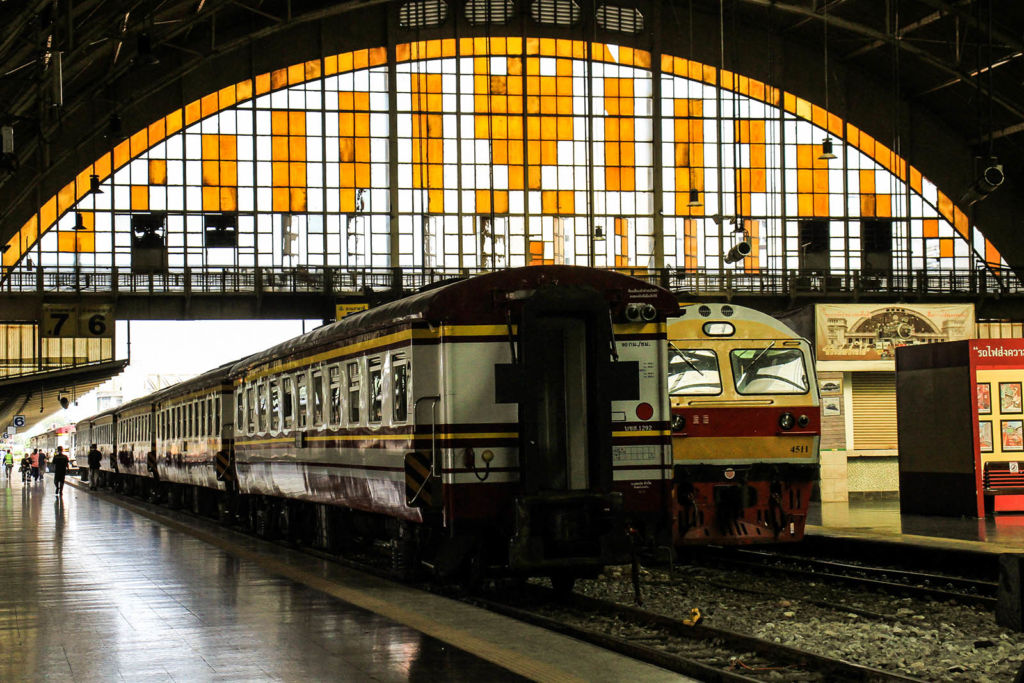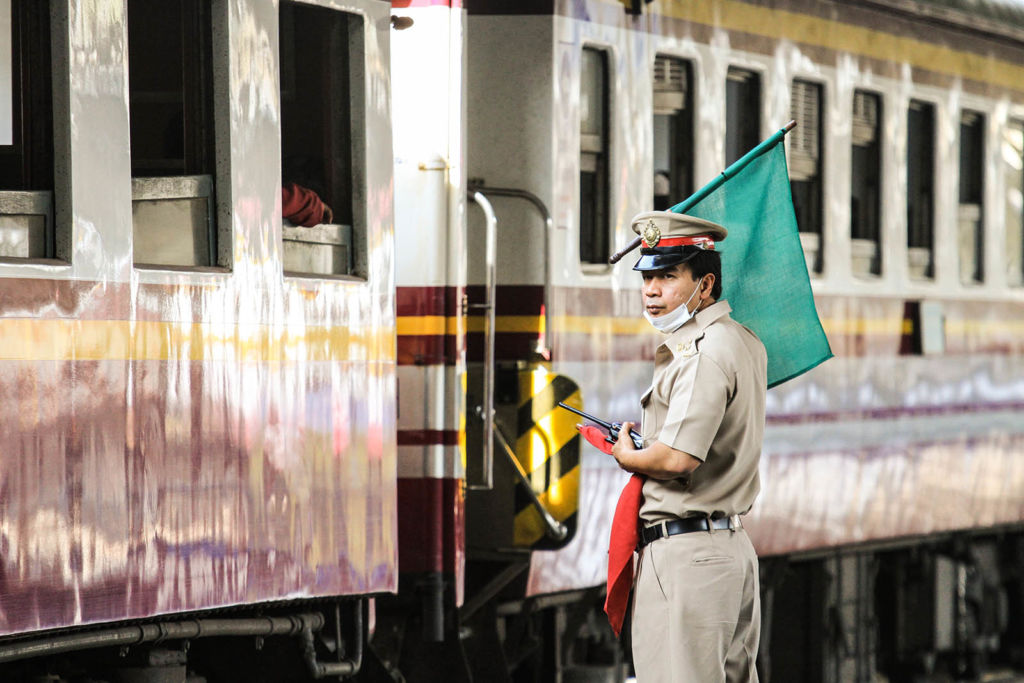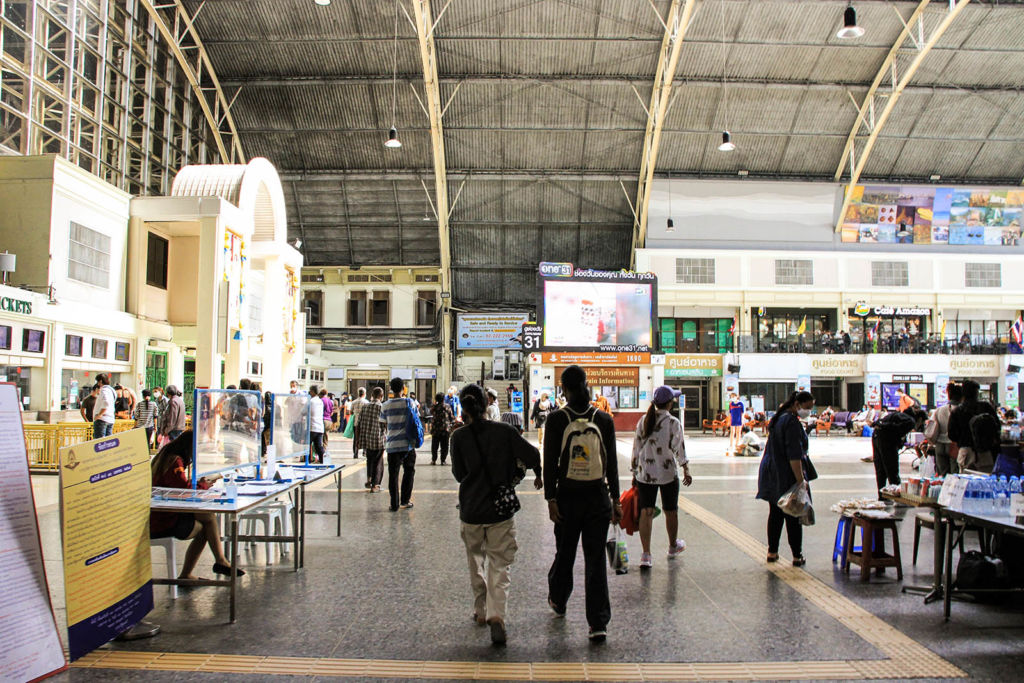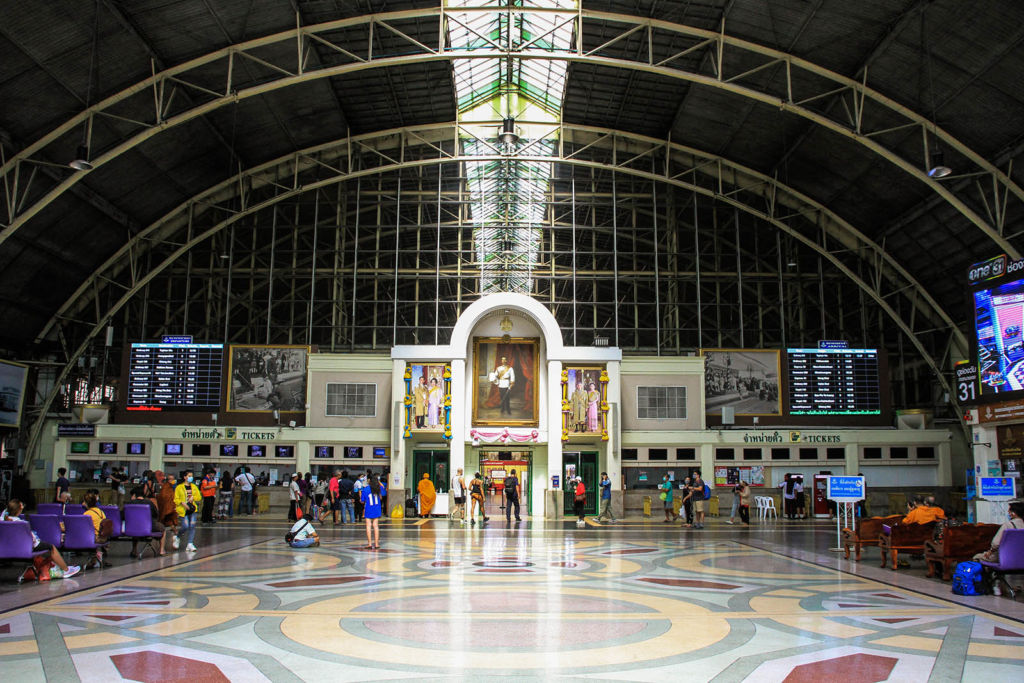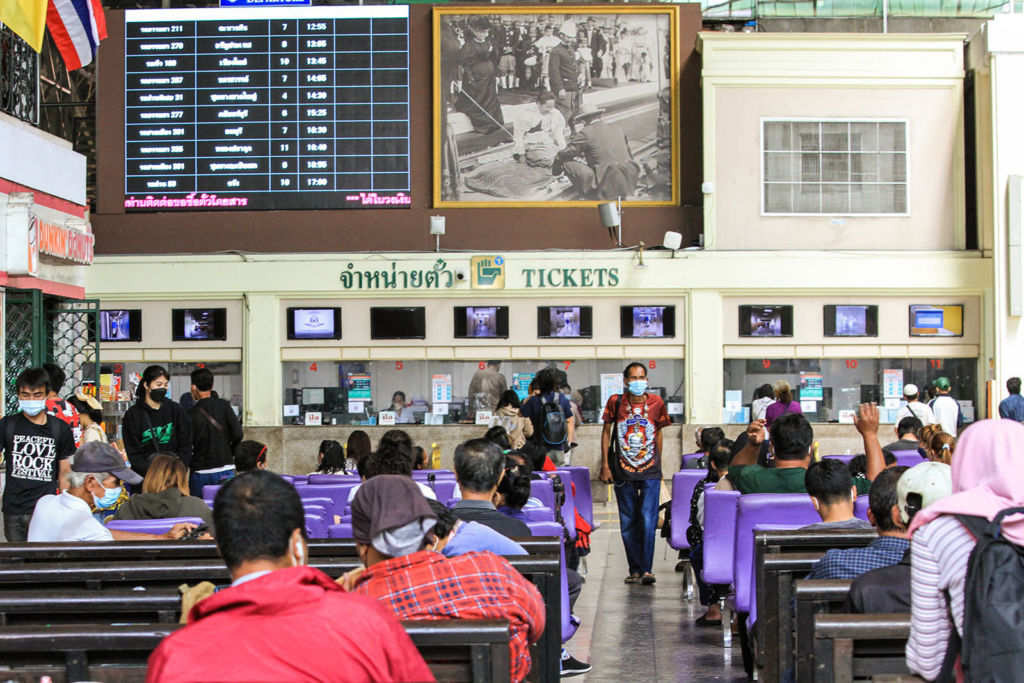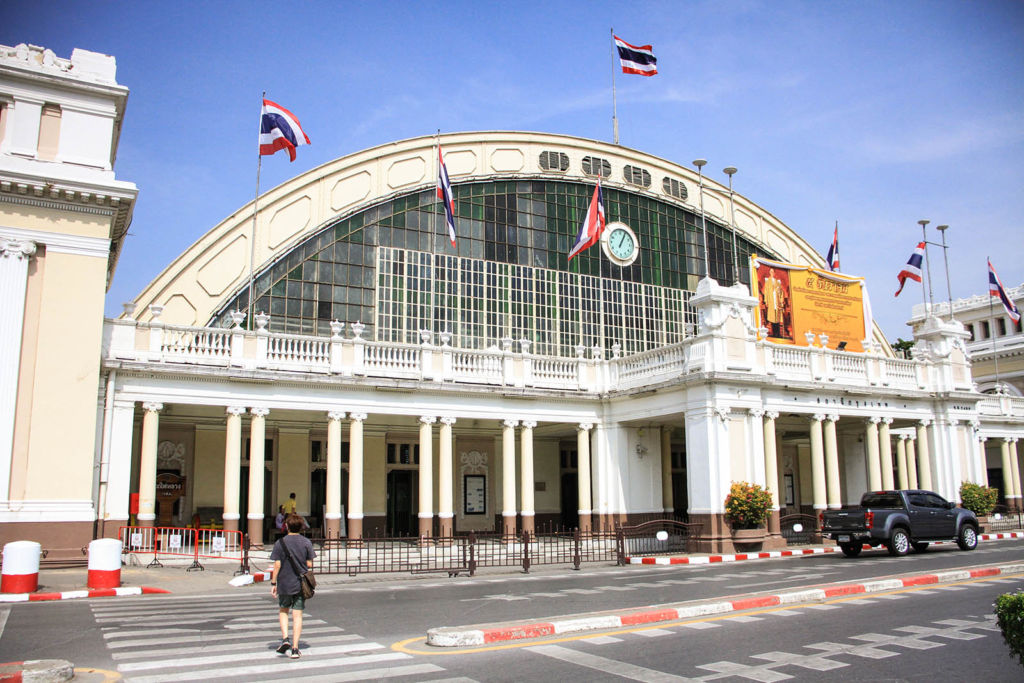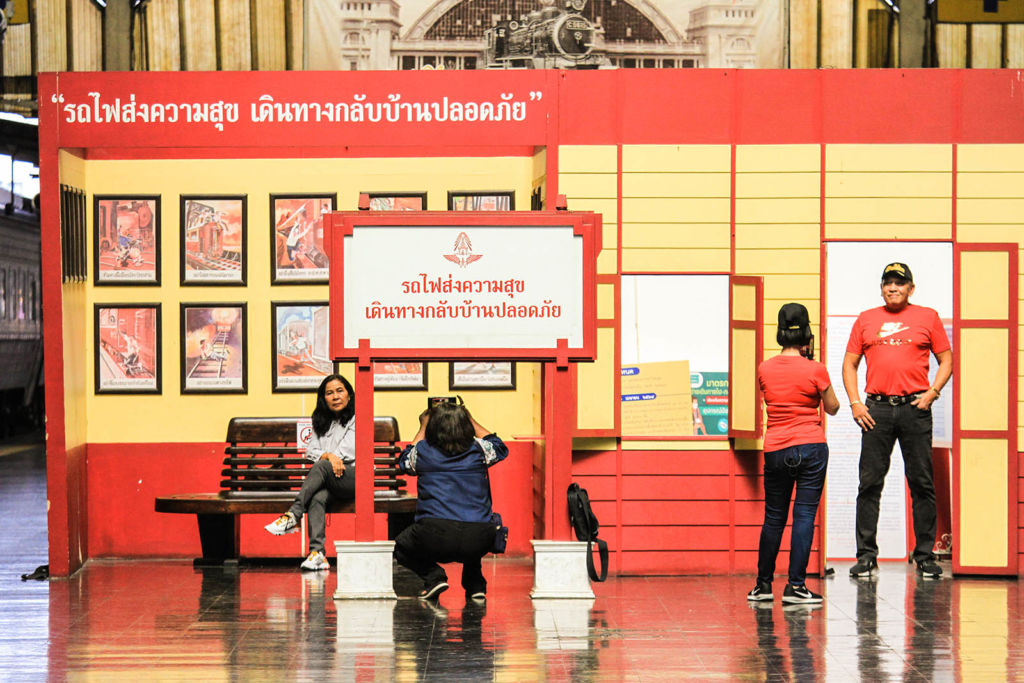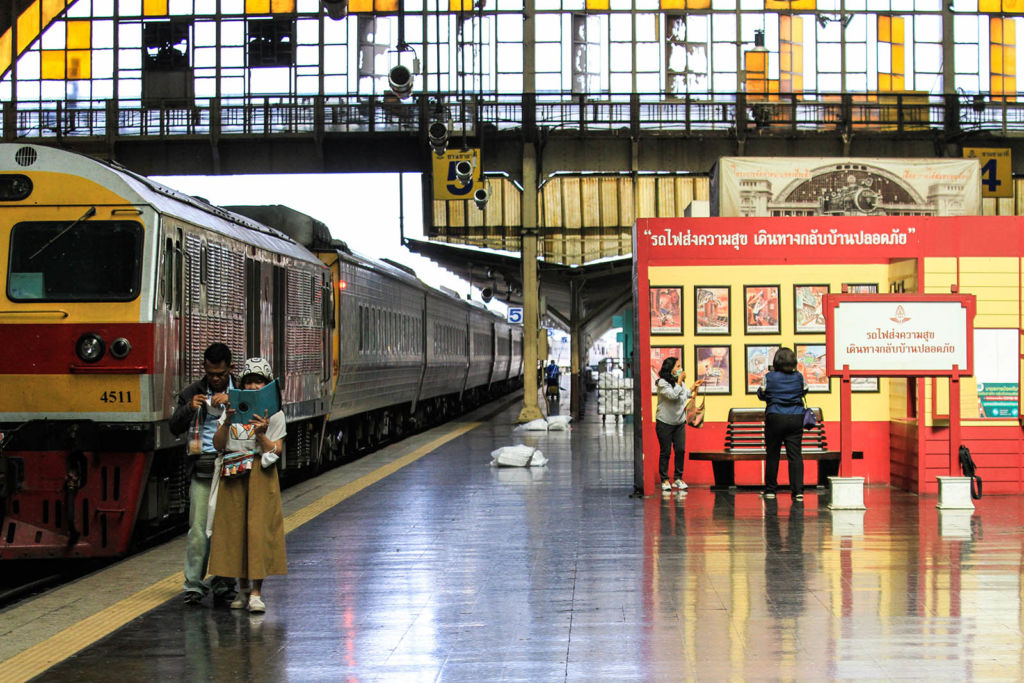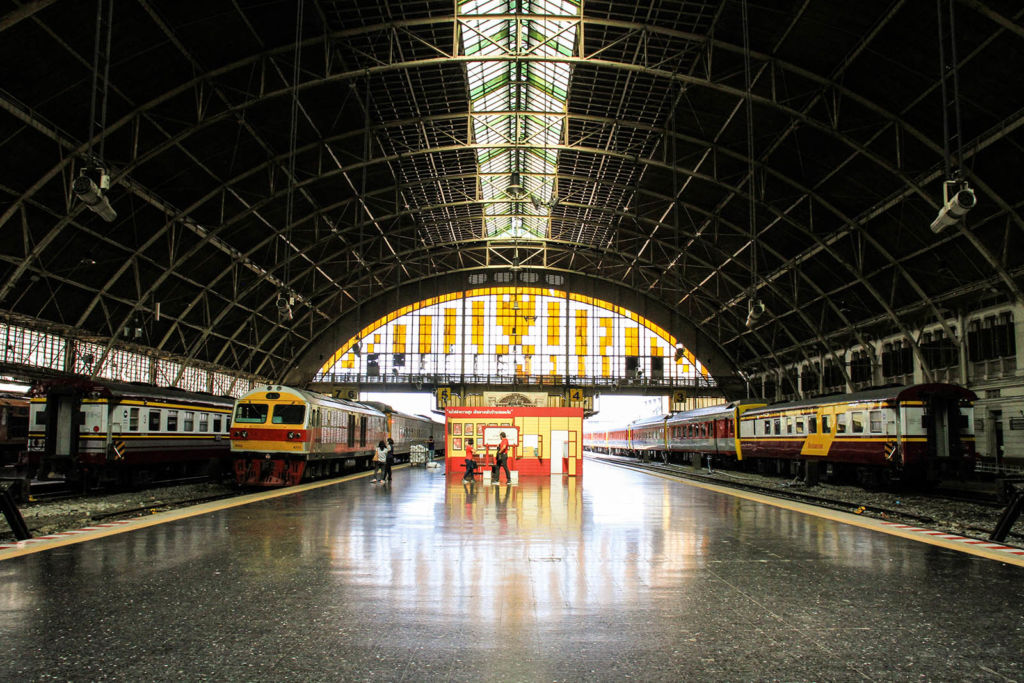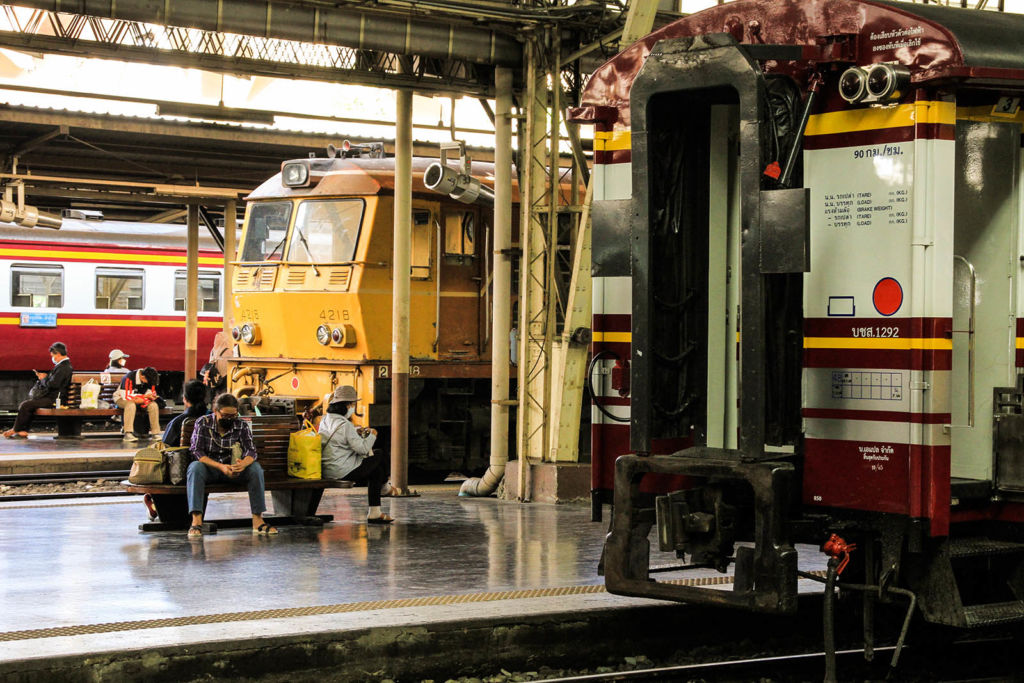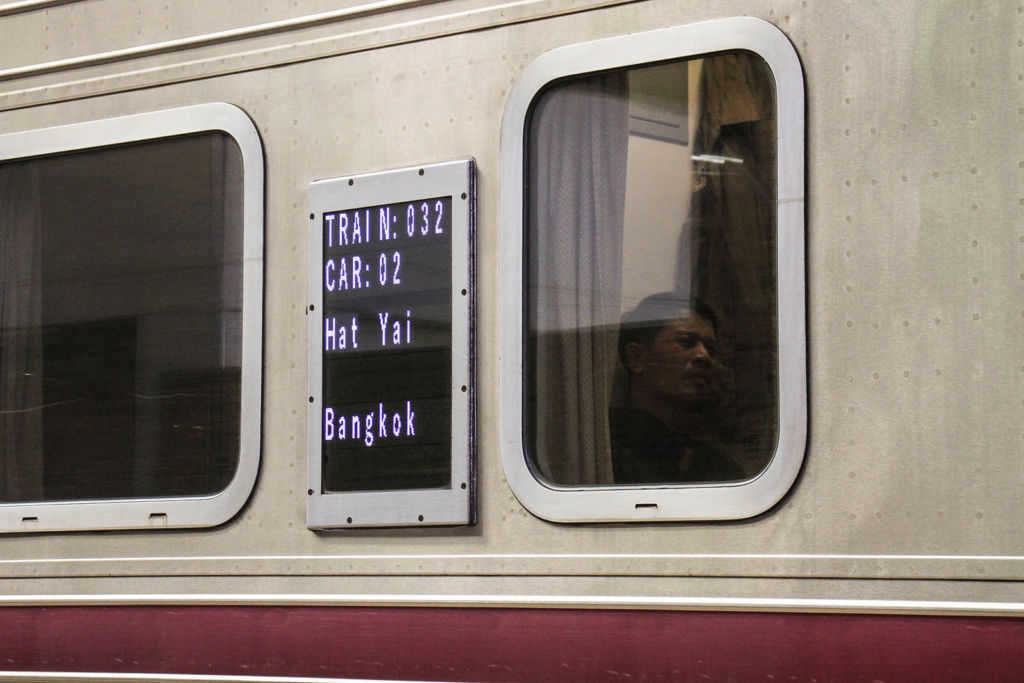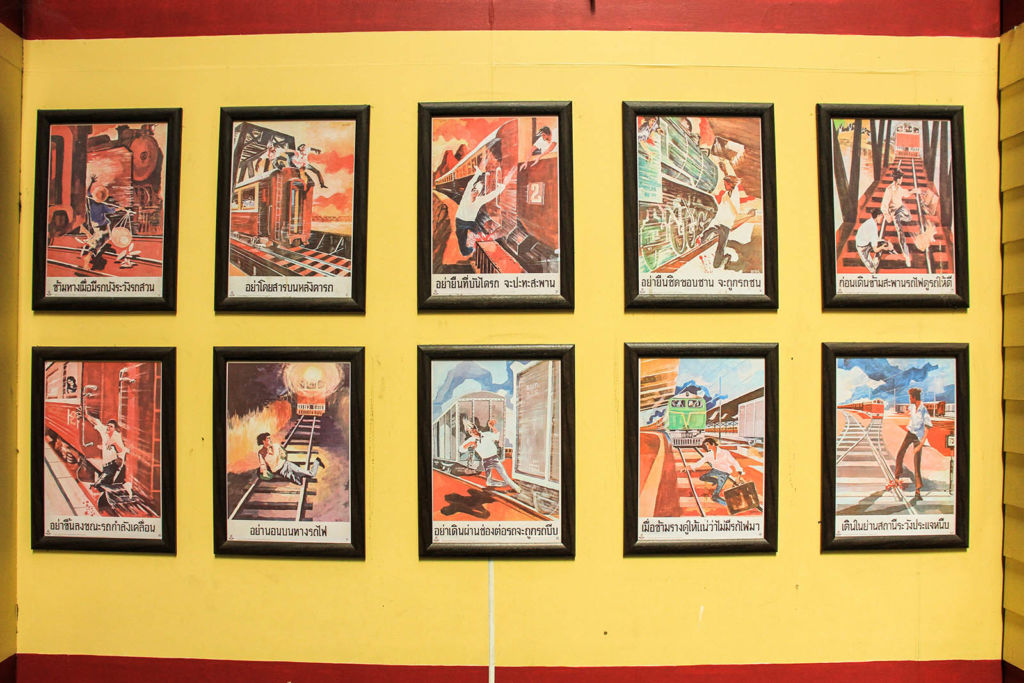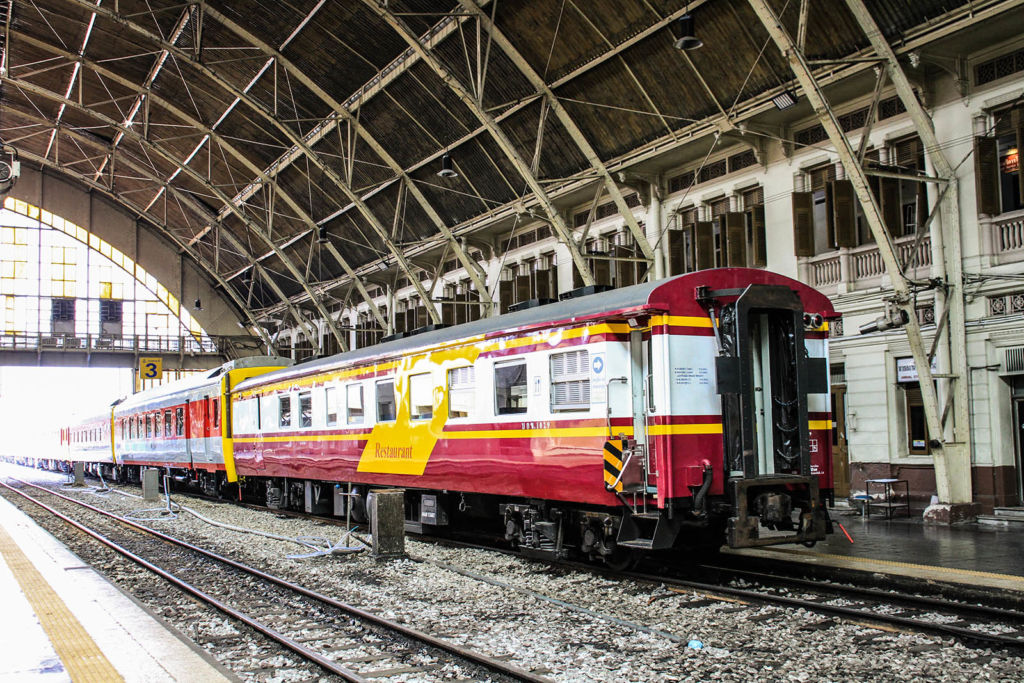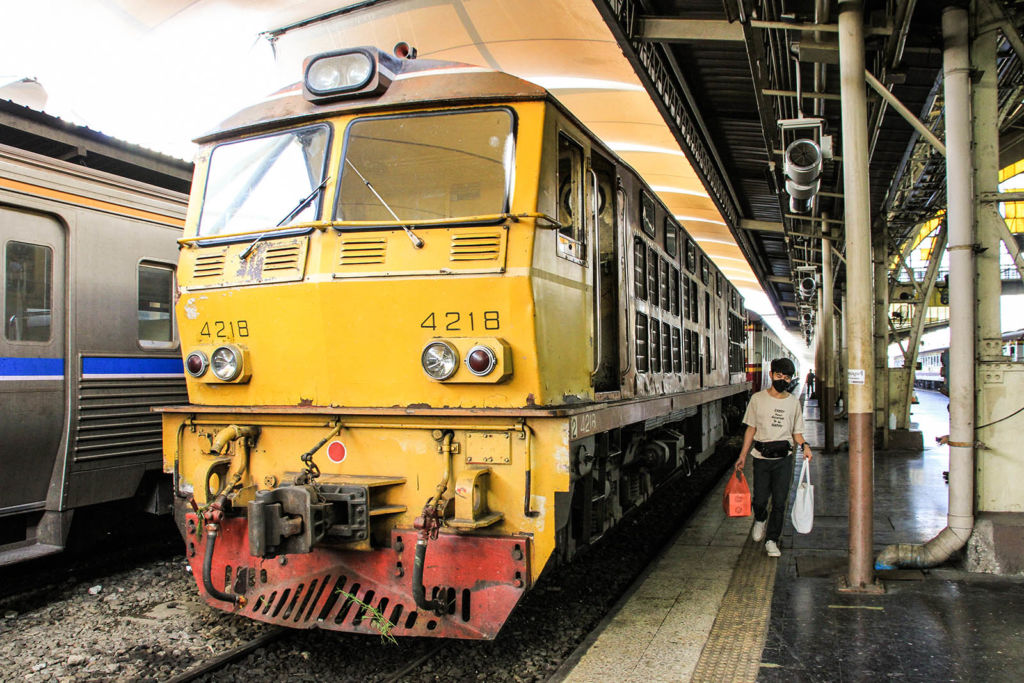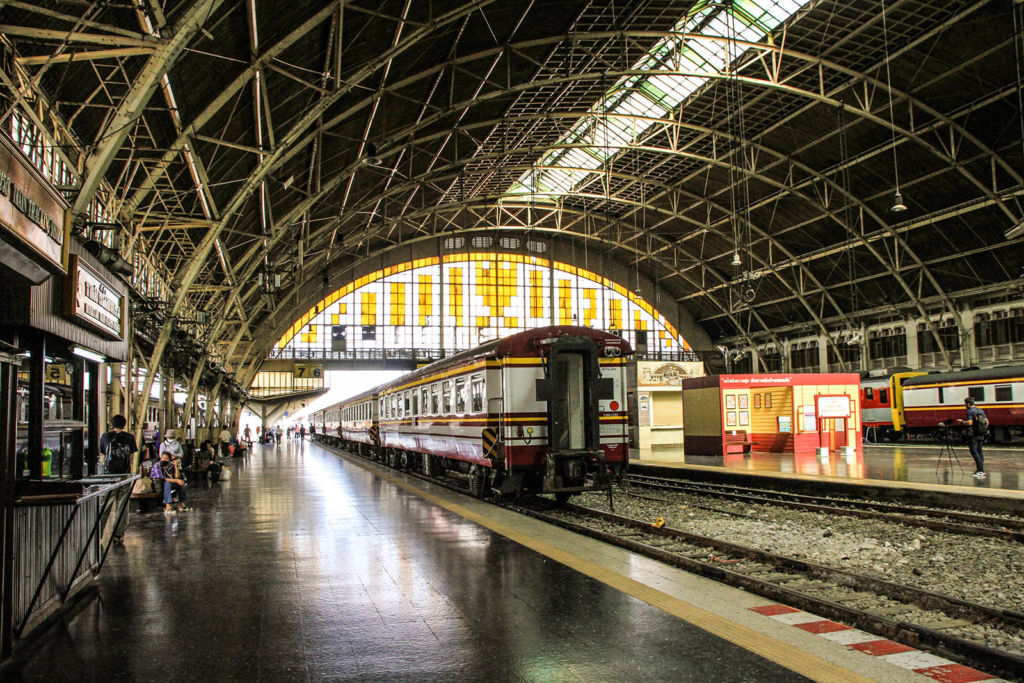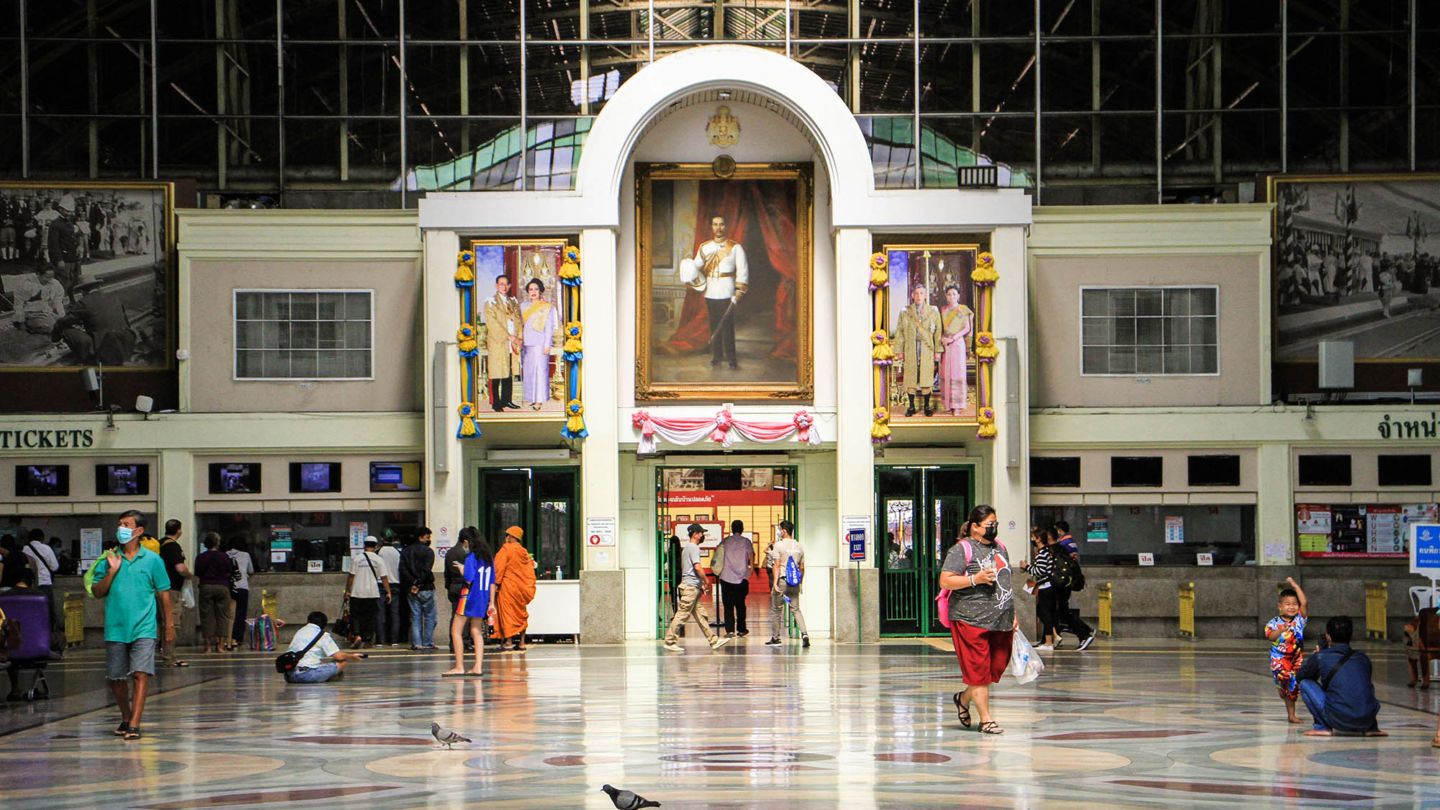Porjai Sookman, 57, rides the rails every week to Bangkok’s Chinatown area from her home just north in the old capital of Ayutthaya. She alights at the nearby railway station and passes beneath its grand arched ceiling and stained glass windows. There and home again only costs her THB30 (US$1).
Next week, when the century-old Hua Lamphong railway station goes into semi-retirement, Porjai will have to figure out a new route, which may mean more walking on her bad right leg.
“I worry that I might have to make more trips – stopping at Bang Sue first before coming to Hua Lamphong – or I may have to wait hours to get where I want to be because of fewer available trains,” she said.
Thailand became much smaller 105 years ago when Hua Lamphong opened in what were the western outskirts of the capital. It was the crown jewel anchoring a growing network of rail lines built by the Royal Siamese Railway at the behest of King Chulalongkorn, who transformed Bangkok by importing all the things he fancied from Europe.
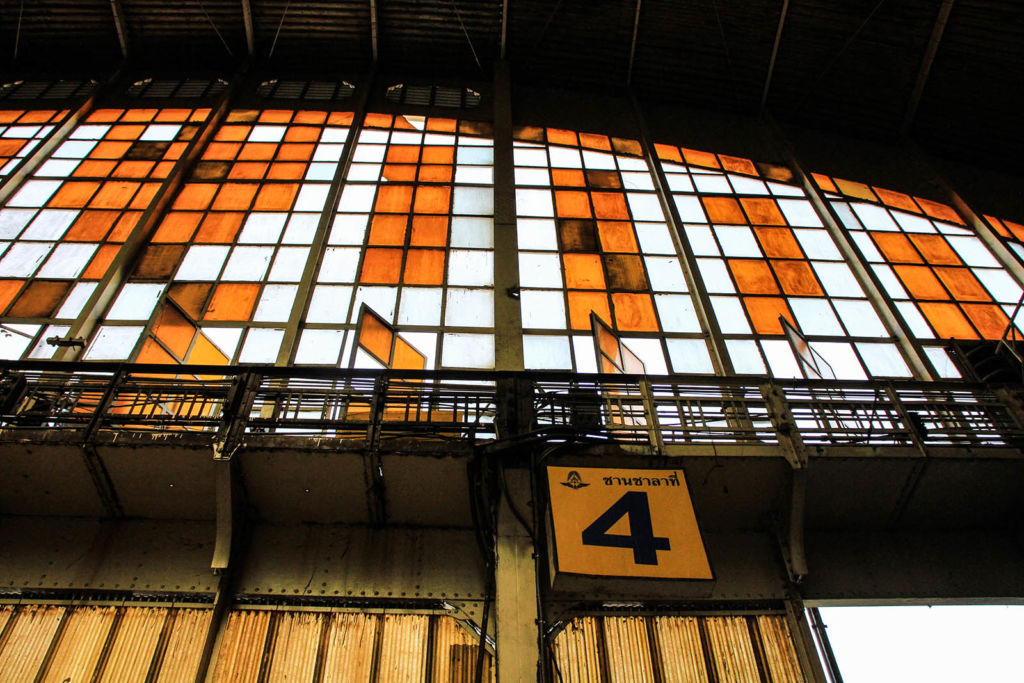
Next week, the cathedral to railway terminal splendor will be usurped by a massive contemporary upstart in the northern outskirts; but while its usual diesel-powered din will be quieter – it won’t be silenced.
Indeed, as other architectural marvels that defined the capital fall one by one, Hua Lamphong, formally known as the Bangkok Railway Station, will survive, for now, given its indispensable location. It was slated to close permanently just earlier this year.
After years of shifting plans – demolition? museum? mall? – what’s now called the State Railway of Thailand says the irreplaceable downtown station will play a “reduced role” starting Dec. 23 with only 22 trains pulling in daily instead of 118. Prior to COVID, it was 200 trains and about 60,000 passengers per day.
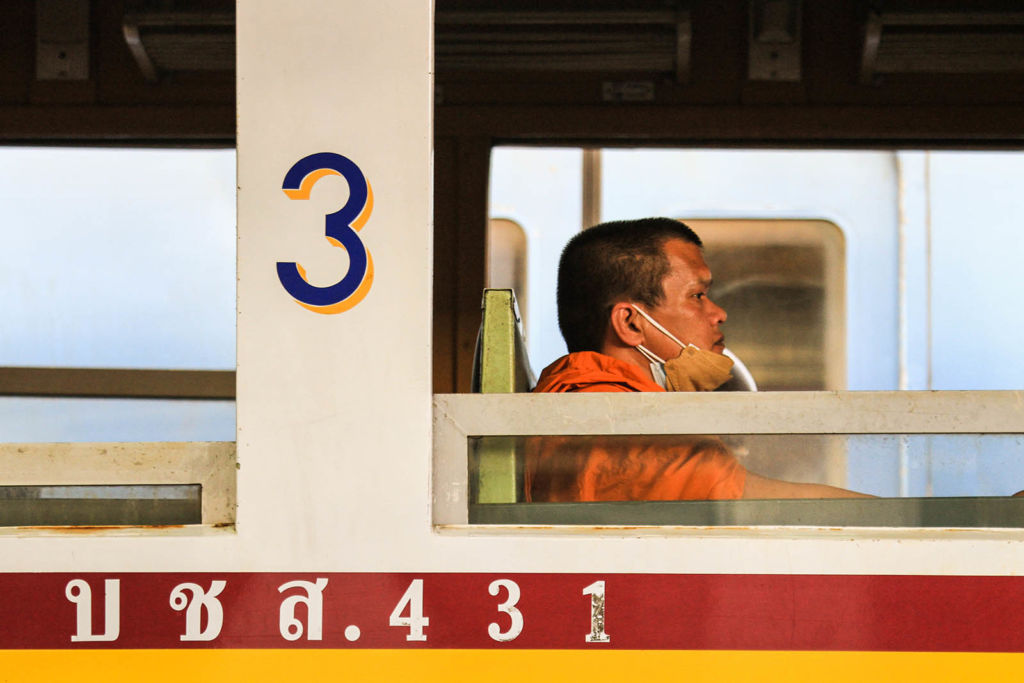
Pichet Kunathammarak, deputy director of the Rail Transport Department, denied speculation Hua Lamphong would still be demolished or closed once the Bang Sue Grand Station opened to the north in Chatuchak district, because the latter is far less well-connected to the inner city.
“Some trains are unnecessary because people who want to commute from Bangkok to other provinces do not need to stop at Samsen Station or Yommarat Station,” Pichet said. “Long-distance trains will instead move to the Bang Sue Grand Station, which is more convenient to travel.”
A woman sweeping the station, identifying herself only as Auntie Sommai, said she had heard talk of closing the station, and is still waiting for the official word about her job.
“If the station were to really shut down, I would like to know as soon as possible too,” she said.
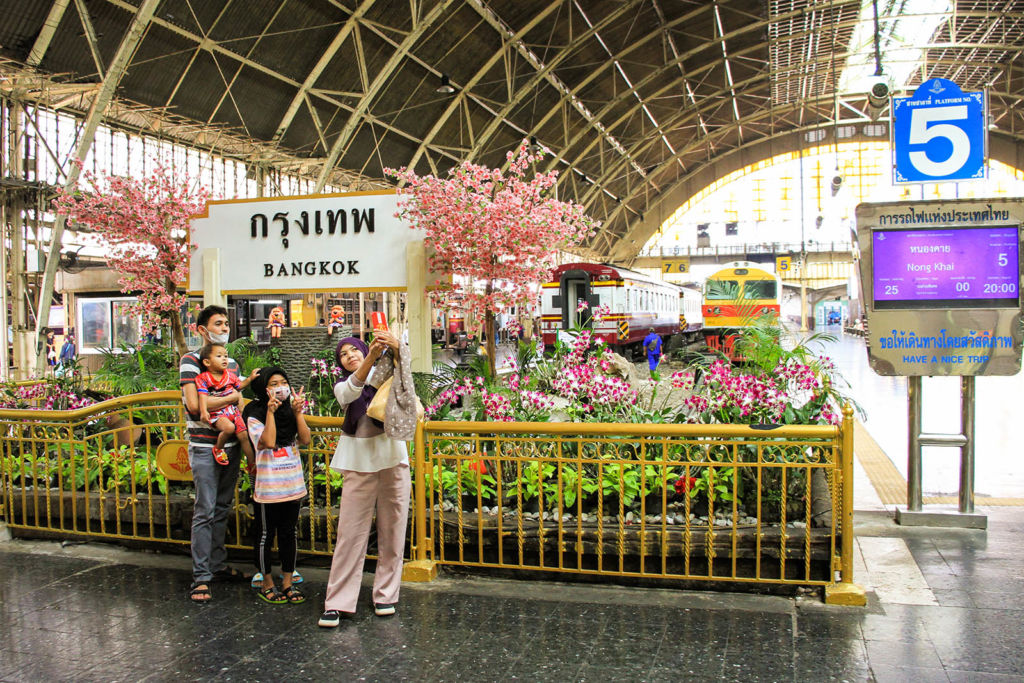
Hua Lamphong is doomed by the state railway’s unfathomable debt and its own prime location, according to Transport Minister Saksayam Chidchob. He said it will have to eventually wind down operations. The state railway, which exemplifies corruption-plagued and wasteful Asian transport fiefdoms, has tried to squeeze money from its vast tracts of prime real estate over the years, and there were talks of selling off Hua Lamphong all or in part to build another shopping mall or hotel.
But while preservationists have failed to save culturally significant buildings such as Scala Theater, the railway station completed in 1916 as a monument to the modern age – and royal foresight – is likely to be preserved in some form. One recent plan called for it to be maintained in part as a museum. The addition of a subway station linking it to the expansive commuter rail system also boosted its profile.
A #SaveHuaLamphong campaign has been building public pressure against any closure decision, especially given many Bangkok residents feel they have more than enough shopping mall options already.
Hua Lamphong opened on June 25, 1916, six years after construction began. Among the many things Chulalongkorn imported to make Bangkok a European-alike city was an entire stable of Italian professionals subsequently put in charge of public works.
Architects Mario Tamagno and Annibale Rigotti, who built the European-styled Ananta Samakhom Throne Hall, designed the Neo-Renaissance station, which is instantly identifiable for its arched steel roof, windows and decorated wooden facades. Its overall look, including a giant clock and open-air galleries, were inspired by the king’s fondness for Frankfurt’s main train station.
